Posted on Fri 17 May 2024
prototyping wmitw
how do you introduce players to the world of a game?

Posted by
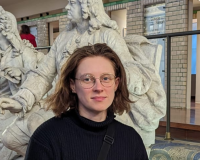
Elinor Lower
Eli is one of the Studio's 2024 Winter Residency Artists, exploring how we are hyper-individualised as workers, citizens and humans through 'we meet in the woods', a place-based, multiplayer theatrical game.Project
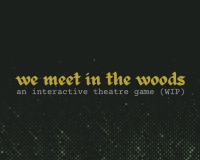
we meet in the woods
an interactive theatre game exploring systems of co-creation and consensus building, beginning in a forest.From February to March of this year (2024), I was one of the Pervasive Media Studio’s Winter Residents, exploring the theme of ‘Other Minds’.
My project, we meet in the woods, an interactive theatre game, is something I’ve been noodling on for a while, grown from a curiosity about the ways that forests intuitively self-organise to share resources, disperse information and respond to threats (amongst many other things). I’m interested in existing systems for collective care and co-creation, and how we might non-extractively fall into step with them to become softer / wilder / more instinctively generous.
As I said in my mid-way blog post, beginning to untangle or even sit with the complexity of the ideas I’m so excited by was a deeply daunting task, and one for which the time constraints and practical realities of the residency were deeply useful. (Having only 11 funded days of work time will necessarily limit how full-throttle you go with any idea.)
What emerged most strongly was the necessity of clarity around the agency of the ‘player’, and the ways in which said player might be inducted into the world / rules / expectations of the game. To explore this, I experimented my way towards two tangible, testable game elements: a prologue, and a ‘collision point’.
The Prologue
Though I think my ultimate narrative intention for the game is for it to be something that the players attempt (and succeed at) breaking, for it to be worth playing it needs to have a narrative to which feels compelling—beyond any ‘clever’ formal experimentation. Something to make you want to keep clicking onwards, stepping forwards. All the whimsical theatrical devices in the world won’t keep you engaged if the story’s naff.
So what is the moment where you first meet the game? Where you see the glimpse the palette of colours from which the game will draw?
I wanted to explore how I might make that first moment—the process of ‘onboarding’—as low-stress as possible. For it to feel within the comfort zone of anyone considering playing.
As a first draft of this, I’ve developed a playable prologue, which would perhaps be sent to a ticket-holder the week before they travel to play the game itself in person. Within it, you get a sense of the character you’ll be playing as, the world in which they exist, and a tease of the narrative ahead. It also presents some early-stage choices. Choices (at the moment) don’t necessarily shape the later game, but they colour in your personal protagonist. Not everyone will end with the same picture of the character in their head. It will depend on the options they pick.
You can play that here. (And if you do, please do leave feedback on the Google Form afterwards!)
Of course, as my thinking has evolved, this prologue has thrown up several interesting questions around agency and the ways we teach players how a game works.
Since it’s a choice-based story, it by extension does not permit the player agency; choice and agency aren’t the same thing. I, the writer, have decided exactly how far a player can wander. Do I want that to be the player’s first experience of the world they’re entering? Would I inadvertently be teaching players the opposite to what I’m intending?
If so, what would a prologue that affords greater agency look like?
(I don’t know that yet. But it’s what I’m thinking about now!)
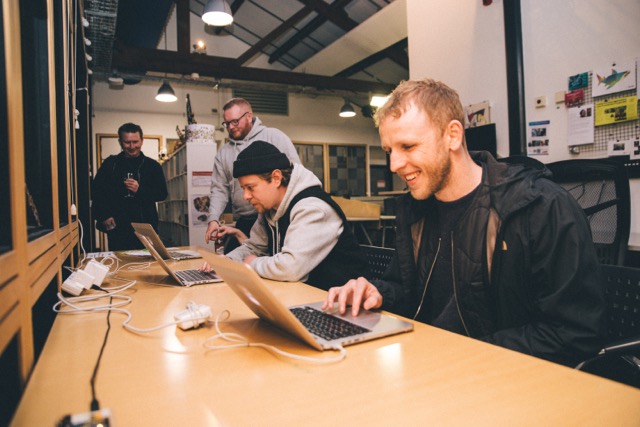
Image by ShamPhat.
The ‘Collision Point’
I currently imagine that each player will begin the game solo, holding their coloured-in protagonist in their head, exploring the forest alone. Then, that the structure of the game to start will eventually collide them towards more and more players, incrementally complicating the decision-making required of them. (Make decisions together! Reach consensus! Share information! Distribute resources!)
Something like:
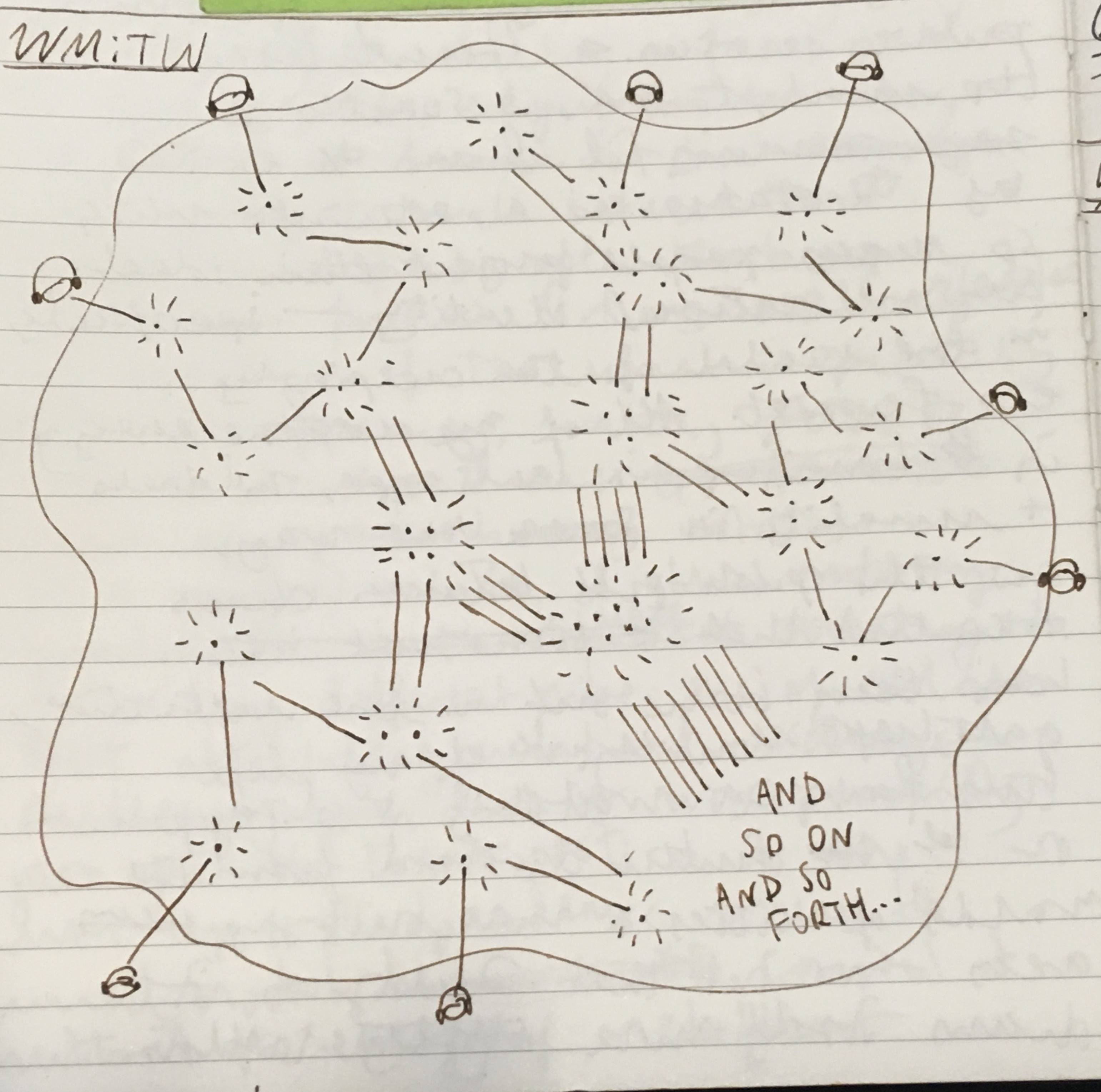
Now, it’s possible that everyone who shows up to play the game in-person already knows each other. Maybe they organised a trip on a big unwieldy group chat and bought their tickets at the same time. But what if everyone’s a stranger? What if the game is going to throw you towards someone you’ve never met before and ask you to immediately form enough of a bond that you can make decisions together without a screaming match?
I don’t know about you but the thought of that makes me feel anxious.
How might the design of the game therefore support this moment of meeting? Make it less excruciating.
I’m a theatre guy. I like a script. I like a list of instructions. Might that help?
Some of the attendees of the residency showcase back in March were generous enough to test a prototype of this moment, where two players arrive into the same part of the forest (recreated in the PM Studio via the cunning magic of 10 hour forest ambience video projected onto the wall). Upon arriving, there’s a button to press! Doing so prints off a tiny script, which the players then read to each other.
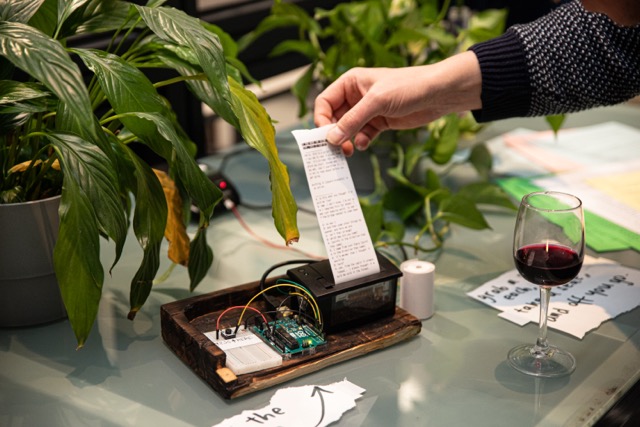
Image by ShamPhat.
Again, this presents an interesting sticky point around agency, but one which feels useful. I don’t want to just throw people into an uncomfortable social situation without any guardrails. The script therefore acts as the equivalent of stabilisers on a bike, encouraging two strangers to build a silly kind of rapport, give each other some compliments, and then, when they feel comfortable enough in each others’ company, it provides an exit point where they can set it down, take off the stabilisers and careen into the rest of the game together.
It’s not perfect yet by any stretch, but from this first test, it seemed that this framework for a conversation helped to engender a kind of familiarity between strangers, establishing them as co-conspirators in the unfurling narrative. Something to build on!
Where Next?
All of these things are drafts, propositions, provocations. I’m simultaneously untangling and complicating something. Hopefully, soon, it won’t just be me puzzling away at it.
Next, I’d like to explore how an audio world might support gameplay, providing a way to hang onto a shared narrative thread whilst also enabling the player to be fully present in their surroundings. (I’m averse to the idea of needing to check in with a map or an app, you know?) Could this audio be live? How might players interrupt or divert it?
Questions questions questions.
Until then!
Maybe give the prototype a go.